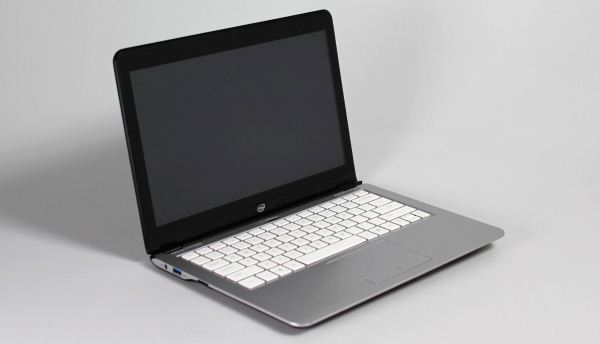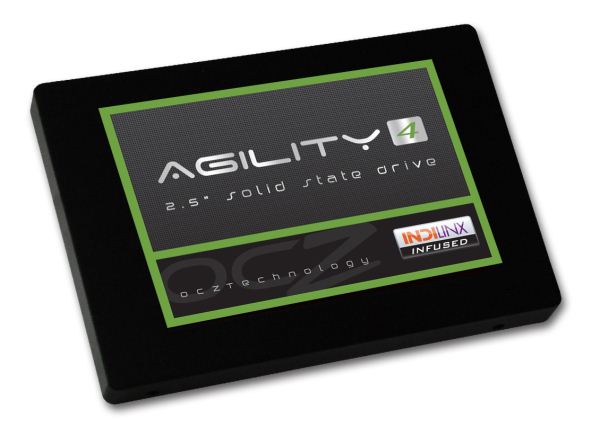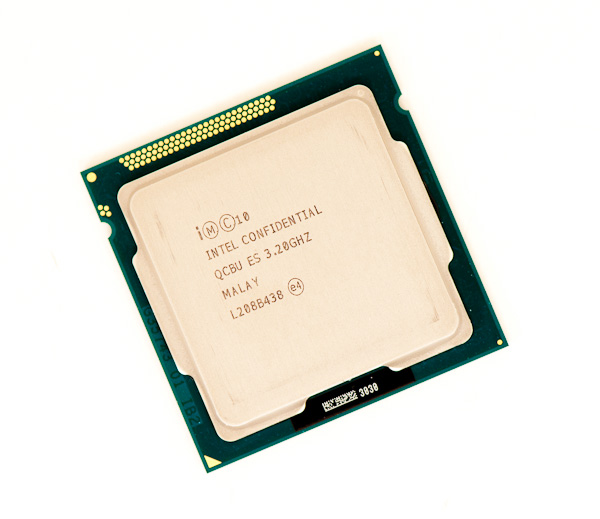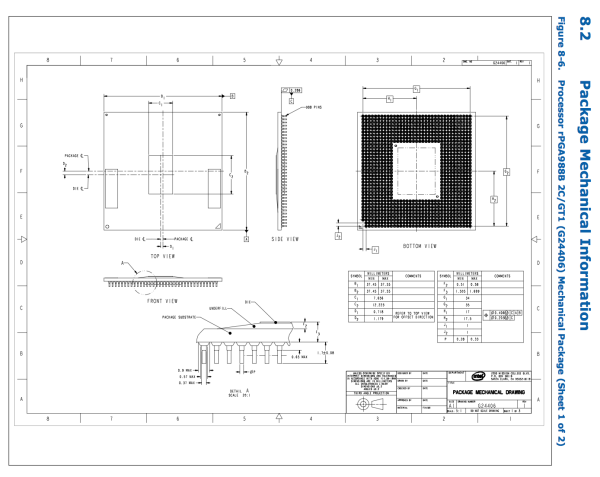Results 1,891 to 1,900 of 12096
Thread: Anandtech News
-
05-28-12, 11:00 PM #1891
Anandtech: Logic Supply LGX AG150 Fanless System Review: Cedar Trail or Cedar Trial?
Every so often we have a vendor come to us with a unique product, something that may or may not have an immediately evident purpose, or may not be suited strictly to end consumers. Such is the case with the LGX AG150 system we received for review from Logic Supply, a totally enclosed and fanless system geared almost exclusively for commercial and industrial applications. The LGX AG150 is also our first serious hands on experience with Intel's Cedar Trail Atom refresh.
This system is for all intents and purposes a fairly complete PC capable of running Windows 7, featuring both wireless and wired connectivity, an HDMI port that supports 1080p video, and even high current USB ports...all in a sleek aluminum casing. Logic Supply has given us an opportunity to review two products together: the Cedar Trail-based dual core Atom N2800, and the LGX AG150 system itself. One of these has a future, but the other seems to be stuck squarely in the past. Read on for our rundown of the good, the bad, and the ugly.
More...
-
05-29-12, 08:30 AM #1892
Anandtech: Dell XPS One 2710 Review: The Premium All-in-One
The last time we reviewed an all-in-one from Dell, our impressions were decidedly less than favorable. Dell delivered a polished software experience, but the Inspiron One 2320 we saw had serious issues virtually across the board in terms of both hardware and configuration. As a family appliance (the market typically targeted by all-in-ones), the Inspiron One 2320 was a bust. Yet with the XPS One 27 (along with the impending Inspiron One 20 and Inspiron One 23) they're looking to reverse their fortunes.
Gone are the poor quality screen, awkward stand, and middling connectivity. In their place we find a PLS screen by Samsung, a more ergonomic stand, and all the modern connectivity you could ask for. Better still, the advent of Ivy Bridge and Kepler promise to shore up many of the hardware weaknesses of the last generation of all-in-ones. Read on to find out if the new Dell XPS One makes the grade.
More...
-
05-29-12, 11:00 PM #1893
Anandtech: More Good News from AMD: 30 Additional Free AFDS Passes Available
You guys really impressed AMD with how quickly you took advantage of their 50 free passes to AMD's Fusion12 Developer Summit (AFDS). After seeing that a couple of commenters were unable to get in, I went back and asked AMD if there was any way we could get some more passes. After some initial hesitation (AFDS space is pretty limited), AMD agreed to give away another 30 passes to AnandTech readers as a show of appreciation for you guys.
The show runs from June 11 - 14 in Bellvue, WA, with extended early registration going for $395 per person today. Just like last time, the 30 passes are first come, first serve. Just use promo code Anand12 anytime between now and June 7 (or sooner if we run out of passes). Please only use the code if you are able to attend.
More...
-
05-30-12, 12:30 AM #1894
Anandtech: The Bulldozer Aftermath: Delving Even Deeper
It has been months since AMD's Bulldozer architecture surprised the hardware enthusiast community with performance all over the place. The opinions vary wildly from “server benchmarks are here, and they're a catastrophe” to “Best Server Processor of 2011”. The least you can say is that the new architecture's idiosyncrasies have stirred up a lot of dust.
Although there have been quite a few attempts to understand what Bulldozer is all about, we cannot help but feel that many questions are still unanswered. Since this architecture is the foundation of AMD's server, workstation, and notebook future (Trinity is based on an improved Bulldozer core called "Piledriver"), it is interesting enough to dig a little deeper. Did AMD take a wrong turn with this architecture? And if not, can the first implementation "Bulldozer" be fixed relatively easily?
We decided to delve deeper into the SAP and SPEC CPU2006 results, as well as profiling our own benchmarks. Using the profiling data and correlating it with what we know about AMD's Bulldozer and Intel's Sandy Bridge, we attempt to solve the puzzle.
More...
-
05-30-12, 12:00 PM #1895
Anandtech: OCZ Launches Agility 4 Series: Indilinx Everest 2 on a Budget
OCZ has now released their Agility 4 SSD series. Just like the move to Vertex 4 (our review) from Vertex 3, the Agility 4 uses OCZ's own Indilinx Everest 2 controller (the actual silicon is from Marvell) instead of SandForce. The differences between the Agility and Vertex series has not changed with the fourth generation: Vertex uses synchronous NAND whereas Agility uses asynchronous NAND. The Agility 4 uses a SATA 6Gb/s interface and comes in a 2.5" 9.5mm form factor. Below are the full specifications:
Read speeds seem to be the most affected by the use of asynchronous NAND. Vertex 4 offers sequential reads up to 550MB/s and 4K random reads of 90K IOPS for 128GB and up, whereas Agility 4 maxes out at 400MB/s and 58K IOPS. Write speeds have not taken as big a hit, although Vertex 4 is still noticeably faster by offering up to 475MB/s sequential writes. However, it should be kept in mind that these are figures provided by OCZ—we'll find out the real world performance when we get our review sample(s). At least in my eyes the figures for Agility 4 sound fairly conservative and rounded, as usually we see manufacturers listing differences of 5MB/s or even less, while for now all sequential numbers are even hundreds.OCZ Agility 4 Specifications Capacity 64GB 128GB 256GB 512GB NAND 2Xnm asynchronous MLC NAND Number of NAND Packages 8 16 16 16 Number of Die per Package 1 1 2 4 Sequential Read 300MB/s 400MB/s 400MB/s 400MB/s Sequential Write 200MB/s 300MB/s 400MB/s 400MB/s 4K Random Read 46K IOPS 58K IOPS 48K IOPS 48K IOPS 4K Random Write 47K IOPS 72K IOPS 85K IOPS 85K IOPS Street Price N/A $150 $250 $561
NewEgg does not sell the Agility 4 yet but I was able to find all models except for the 64GB from Amazon. The pricing of Agility 4 is indeed competitive. The 128GB Agility 4 is actually slightly more expensive because 128GB Vertex 4 currently sells for $140 in Amazon, but pricing may change as more stock comes in. Bigger capacities, on the other hand, offer nice savings over Vertex 4. The 256GB model is $40 cheaper and the 512GB model is $79 cheaper than the equivalent Vertex 4 models. Amazon currently has 128GB and 256GB models in stock in case you want to be an early adopter. The 512GB model is out of stock and the 64GB model is not even listed, so we're still waiting for availability.
We're already working on getting review samples from OCZ, so stay tuned for our review!
More...
-
05-31-12, 01:00 AM #1896
Anandtech: Intel Core i5 3470 Review: HD 2500 Graphics Tested
Intel's first 22nm CPU, codenamed Ivy Bridge, is off to an odd start. Intel unveiled many of the quad-core desktop and mobile parts last month, but only sampled a single chip to reviewers. Dual-core mobile parts are announced today, as are their ultra-low-voltage counterparts for use in Ultrabooks. One dual-core desktop part gets announced today as well, but the bulk of the dual-core lineup won't surface until later this year. Furthermore, it only revealed the die size and transistor count of a single configuration: a quad-core with GT2 graphics. Compare this to the Sandy Bridge launch a year prior where Intel sampled four different CPUs and gave us a detailed breakdown of die size and transistor counts for quad core, dual core and GT1/GT2 configurations. Why the change? Various sects within Intel management have different feelings on how much or how little information should be shared. It's also true that at the highest levels there's a bit of paranoia about the threat ARM poses to Intel in the long run. Combine the two and you can see how some folks at Intel might feel it's better to behave a bit more guarded. I don't agree, but this is the hand we've been dealt.
Intel also introduced a new part into the Ivy Bridge lineup while we weren't looking: the Core i5 3470. At the Ivy Bridge launch we were told about a Core i5 3450, a quad-core CPU clocked at 3.1GHz with Intel's HD 2500 graphics. This is our first experience with a more affordable Ivy Bridge CPU and with Intel's HD 2500. Read on for our full review!
More...
-
05-31-12, 01:00 AM #1897
Anandtech: Intel Dual-Core Mobile Ivy Bridge Launch and i5-3427U Ultrabook Preview
Back in April, Intel launched their latest CPU architecture along with their 22nm process: Ivy Bridge. Similar to the Sandy Bridge launch last year, the first parts to come out were all quad-core, higher performance chips. Today, Intel is fleshing out their Ivy Bridge offerings with some (but not all) of their dual-core offerings. We have details on their new mobile chips while Anand will be covering the desktop parts. Along with the dual-core offerings, Intel is also launching the Ultra Low Voltage parts that are destined for Ultrabooks, and Intel sent along a prototype Ultrabook equipped with one of these new CPUs for testing.

The idea behind the Ultrabook initiative isn’t particularly new; take your standard ultraportable laptop and put a few additional requirements on it and you’ve got an Ultrabook. It’s really a marketing campaign to get users more interested in spending money on higher quality, higher performance, and higher cost laptops. “Sure, you could get that $500 laptop, but look at how this sweet little laptop that’s less than two centimeters thick!” Even though there’s plenty of marketing behind the initiative, marketing can drive a lot of sales, and Intel has been pushing the Ultrabook hard. So here we are, six weeks after the quad-core launch with an Ivy Bridge Ultrabook in hand, and we have details on the other dual-core mobile parts as well. The Ivy Bridge party is ready to move into the second act.
More...
-
05-31-12, 02:00 AM #1898
Anandtech: Samsung Makes Canadian SGS3 Variants with Krait Official
Almost immediately after making the International Samsung Galaxy S 3 (SGS3) official, speculation started about just what features would make it over to the variants bound for carriers in the Americas and in regions with LTE. Today, Samsung made two Canadian-bound variants of the SGS3 official: SGH-i747 with LTE, and SGH-iT999 with DC-HSPA+ 42 Mbps. Both are built around Qualcomm's MSM8960 Snapdragon S4 SoC at 1.5 GHz, which we've already seen in the HTC One X (AT&T) and HTC One S. Where the SGS3 does mix things up is the inclusion of 2 GB of LPDDR2 RAM. The rest of the details are unchanged - these two newly announced variants still have the same camera, WLAN, and display. Samsung has also given the same sizes and mass, which is a bit surprising since this varied last time around. We've put together a table with some comparisons between the variants and what we know at this point, I suspect closer to launch we'll flesh out some of the obvious question marks.
Samsung also explicitly called out a few Canadian carriers, and from that you can surmise the band support of the two variants. Namely the inclusion of AWS (1700/2100) support on SGH-iT999, and 850/1900 MHz WCDMA alongside AWS and 700 MHz LTE on SGH-i747. Based on how closely the Canadian SGS2 variants mirrored the USA variants last time around, it seems likely that we're looking at what is or is very close to the SGS3s coming to T-Mobile and AT&T in the SGH-iT999 and SGH-i747, respectively.Samsung Galaxy S III Variants Carrier SGH-i747 SGH-iT999 GT-I9300 SoC Qualcomm Snapdragon S4 MSM8960
(2 x Krait @ 1.5 GHz)Samsung Exynos 4 Quad / Exynos 4412
(4 x Cortex A9 @ 1.4 GHz)RAM 2 GB LPDDR2 1 GB LPDDR2 Network Support LTE UE Category 3 DC-HSPA+ 42.2 HSPA+ 21.1 (Intel XMM6262) Display Size 4.8" 1280x720 HD SAMOLED (PenTile RGBG) Size, Mass 136.6 x 70.6 x 8.6 mm, 133g Storage 16 / 32 GB NAND, microSD 16 GB NAND, microSD 16 / 32 / 64 GB NAND, microSD Cameras 8MP Rear-facing, 1.9MP Front-facing WiFi/BT/NFC WiFi 802.11 a/b/g/n, NFC, BT 4.0 (BCM4334) Battery 3.7V 2100mAh (7.77 Whr) Announced Carriers Bell Mobility, Virgin Mobile, SaskTel, TELUS and Rogers Wireless Videotron, Wind and Mobilicity N/A (International)
Source: Samsung
More...
-
05-31-12, 02:00 PM #1899
Anandtech: Dual Core/GT2 Ivy Bridge Die Measured: ~121mm^2
I mentioned Intel's desired secrecy around die sizes and transistor counts for the majority of the Ivy Bridge lineup in our 3470 review from this morning. While I can't count individual transistors in the Core i7-3517U that was in ASUS' Zenbook Prime UX21A we reviewed a week ago, I can measure its exposed die.
Mobile CPUs rarely feature integrated heatspreaders, giving us direct access to the back side of the processor die itself. The dual-core die looks very similar to the quad-core die, it's just not as long. Armed with a pair of digital calipers, I can get a good idea of the CPU's die area.
The die measures approximately 14.7mm x 8.2mm, covering 120.54mm^2 of area. That's roughly 75% of the die area of the quad-core/GT2 Ivy Bridge part:
I included the two Apple SoCs to put Intel's 2C/GT2 die size in perspective. It's entirely possible to build very high performance smartphone/tablet class silicon given a modern enough manufacturing process. While I doubt we'll see anything this class in an iPad anytime soon, when we get to Broadwell (14nm Haswell shrink) the tablet market will be very interesting indeed. Haswell is expected to narrow the idle power consumption gap that separates ARM and big x86 silicon, while increasing die size at the high end. Broadwell will bring die area back in check with a move to 14nm.CPU Specification Comparison CPU Manufacturing Process CPU Cores Transistor Count Die Size Apple A5R2 32nm LP 2 ?? 69mm2 Apple A5X 45nm LP 2 ?? 163mm2 AMD Bulldozer 8C 32nm 8 1.2B 315mm2 Intel Ivy Bridge 2C (GT2) 22nm 2 ?? 121mm2 Intel Ivy Bridge 4C (GT2) 22nm 4 1.4B 160mm2 Intel Sandy Bridge E (6C) 32nm 6 2.27B 435mm2 Intel Sandy Bridge E (4C) 32nm 4 1.27B 294mm2 Intel Sandy Bridge 4C 32nm 4 1.16B 216mm2 Intel Lynnfield 4C 45nm 4 774M 296mm2 Intel Sandy Bridge 2C (GT1) 32nm 2 504M 131mm2 Intel Sandy Bridge 2C (GT2) 32nm 2 624M 149mm2
Gallery: Dual Core/GT2 Ivy Bridge Die Measured: ~121mm^2



More...
-
05-31-12, 04:00 PM #1900
Anandtech: The Rest of the Ivy Bridge Die Sizes
AnandTech reader gplnpsb pointed out in the comments to my last post that Intel properly documents almost all Ivy Bridge die sizes in the mechanical specifications pages of its Ivy Bridge datasheets. That's what I get for feeling accomplished after taking apart the Zenbook Prime and measuring its Core i7-3517U. Only the 4C/GT2, 2C/GT2 and 2C/GT1 dimensions are documented while the 4C/GT1 configuration is gplnpsb's own calculation based on available data.
There are a few items of interest here. The GT1 configs appear to be narrower than the GT2 counterparts, otherwise these chips just differ in terms of die length. Haswell will likely continue the trend.Ivy Bridge Die Comparison CPU CPU Cores L3 Cache GPU Config Dimensions Die Area Ivy Bridge HE-4 4 8MB GT2 8.141 x 19.361 mm 159.8mm2 Ivy Bridge HM-4 4 6MB GT1 7.656 x 17.349 mm 132.8mm2 Ivy Bridge H-2 2 4MB GT2 8.141 x 14.505 mm 118.1mm2 Ivy Bridge M-2 2 3MB GT1 7.656 x 12.223 mm 93.6mm2
Why did Intel stop at 16 EUs for the GT2 in Ivy Bridge? Cost is an obvious concern (Intel likes making tons of money) but at some point you need to scale up memory bandwidth to make use of additional compute horsepower. Haswell will address this issue while it scales up to 40 EUs. Intel could have implemented eDRAM with Ivy Bridge, however only one customer was really asking for it and wasn't interested in paying a significant premium for it. Why pay now when Haswell will deliver it less than a year later?
Gallery: The Rest of the Ivy Bridge Die Sizes




More...
Thread Information
Users Browsing this Thread
There are currently 13 users browsing this thread. (0 members and 13 guests)




.jpg)

 Quote
Quote.jpg)

_575px.PNG)




















Bookmarks